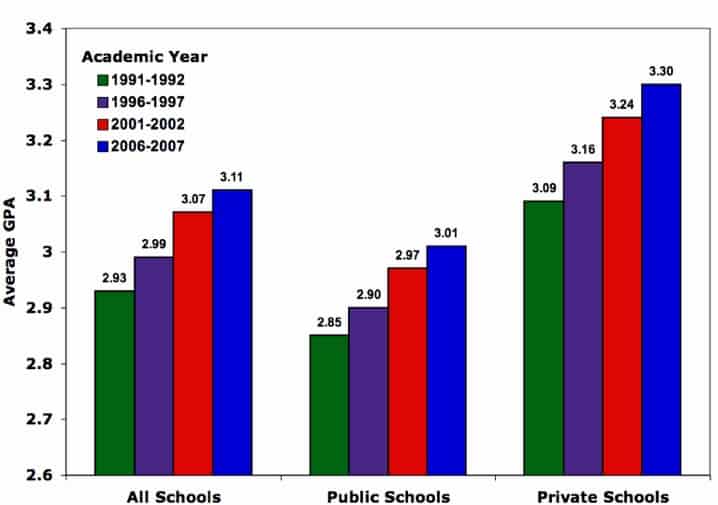

In order to facilitate the discussion, a handout was distributed to encourage the participants to think about the terms being used in the meeting. The problem then is that essays in the humanities, for example, are much more subjective than multiple-choice questions in the sciences. Quantitative rubrics that are consistent between disciplines would be a sure way to keep student complaints to a minimum while deflating grades. “What is the scope of grade inflation within the university? Are we all adhering to similar rubrics?” He then added that Emory does not have internal standards that are consistent from department to department.

Having looked at the quantitative data, Doug Mulford, a lecturer in the Chemistry Department, suggested that his fellow attendees look into personal experiences. Are students really getting better each year or is there grade inflation in high schools already? One point of agreement among the participants was that they don’t see a correlation between the grades going up and the student’s level of academic aptitude. Also, each year students come to Emory with higher grades and test scores than the year before. Whatever the cause, students expect to make an “A” and teachers seem to give these out more than they did in the past. Or, is grade inflation the result of student expectations? Lubin believed that at least part of the problem is related to the variability in professor’s personal grading philosophies. Some suggested that perhaps students are now trained to make good grades or take tests successfully- but they wondered whether these students could think critically. They are not, however, necessarily sure of the reasons for it. Personal experiences, now supported by data, demonstrated that workshop participants believe that grade inflation at Emory is a problem. However, most felt that grades were definitely rising at a very fast pace amongst Emory University undergraduates.īolyard’s data reinforced the belief that already existed in the room. After making a graph of available information about Emory students and their grades, Bolyard concluded that we only have data for a very small time period and we still don’t really know about grade inflation at Emory across time.

” As Bolyard summarized it, what is shown on the various graphs and tables in the PowerPoint showed “the average grade is now a B, not a C.” Workshop participants appeared convinced that there is grade inflation at Emory, but agreed there are also a number of variables that have to be analyzed in conjunction with this data. In her PowerPoint of what she jokingly calls “big scary panels of data,” she stated that even though a few nagging questions remain, “regardless of how you look at it, from 1999 to today, grades are increasing.

First, the Director of Educational Research at Emory College, Melissa Bolyard, addressed the statistics. Kristin Wendland, Senior Lecturer of Music Theory in the Department of Music, and Christine Ristaino, Lecturer in the department of French and Italian, facilitated a workshop to discuss the many aspects of this topic. What do we, as Emory Faculty do about grade inflation? Is it a problem on our campus, and if so- how can faculty members fix it? This is the topic of a meeting sponsored by the Center for Faculty Development and Education that took place on November 11, 2010.
IGRADE INFLATION UNIVERSITY SERIES
Michael Lubin, a professor at the School of Medicine, leaned forward in his chair and put a series of questions to a group of his Emory faculty colleagues: “Why do we care about whether there is or is not grade inflation? What is the usefulness of grades? What is our grading philosophy?” He was, of course, adding more queries to the larger question under discussion.


 0 kommentar(er)
0 kommentar(er)
